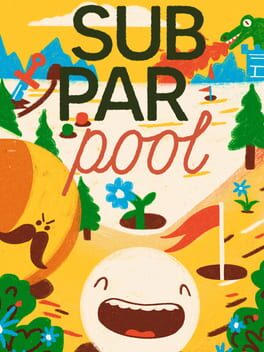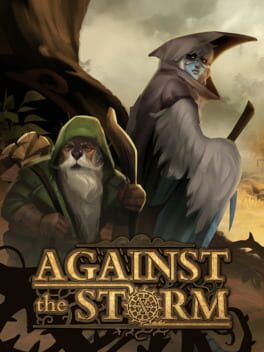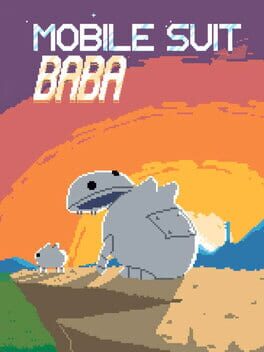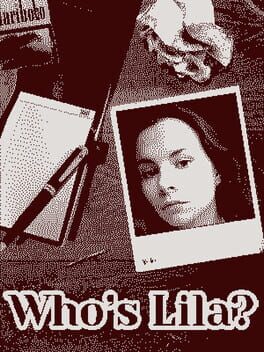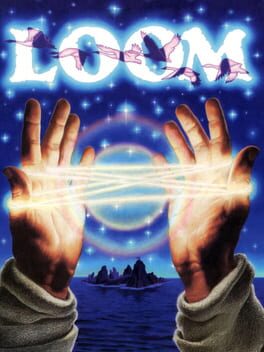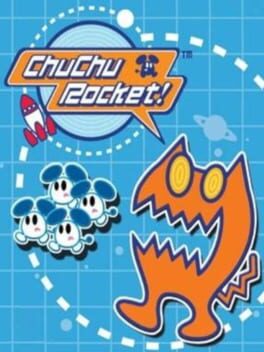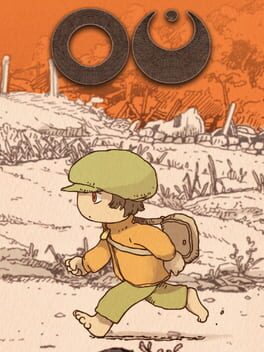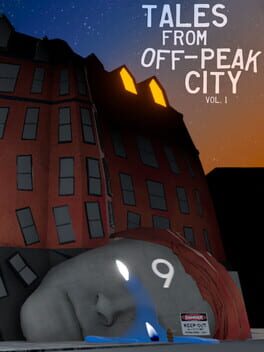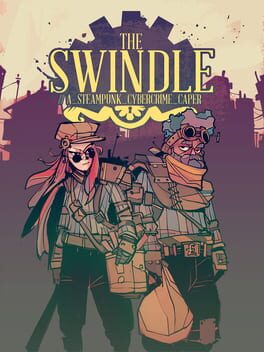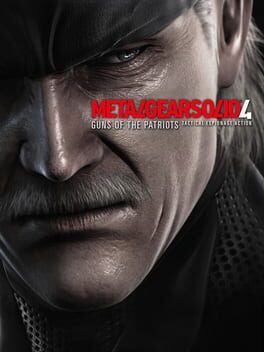nex3
BACKER
2023
Although this is a solidly decent way to spend some time, it feels like the more you push up against the sides of its design the more it ends up disappointing. The core is great: golf-pool is a very clever design, and the various ball and course variants are inventive and fun. But the challenges that drive the meta-progression and focus the actual play... they just aren't good! They veer wildly from the trivial to the extremely difficult, with the latter largely requiring a long run of pure luck to beat rather than any particular skill. And it's a shame, because the core gameplay just isn't quite enough to motivate the player to dive into it over and over on its own.
2017
When I first tried Hollow Knight five years ago, I bounced off it hard. I had not yet known the sweet embrace of Dark Souls. Although I did enjoy a platformer and the occasional metroidvania, the rhythm of this game's combat did not match the beat of my heart, nor did its by-the-book early traversal quicken my pulse. I didn't make it deep enough to even begin to meet the dramatis personae. I just set it down intending never to pick it back up.
That same heart, in the intervening years, grew to love From Software's oeuvre. This love has much to do with why I did eventually return, although not perhaps for the reasons you'd expect. Although Hollow Knight borrows some formal aspects from those games, most notably the bench/shade mechanic and a preoccupation with boss fights, it is on the whole more different than it is similar. And every time I've tried to dip my toe into a game because it's "like Dark Souls", I've walked away shaking my head and mourning designers' inability to learn the right lessons. That was never going to be my reason for playing this.
To understand the true reason, you must first understand what happened after FromSoft stole my heart. I played through all the games in reverse, from Sekiro to Demon's Souls, then wept for there were no more worlds to conquer. But to my friends, these paths were as yet untrodden. I would tune into their streams in vicarious delight as they first saw sights that I now knew so well. And on rare and precious occasion, a friend would ask me to take their hand and guide them through a game entire, the voice in their ear every step of the way.
I joined the journey of one friend in particular through Lordran, from believing these games were fundamentally Too Hard for them to beating the DLC bosses so fast it put the sickest Os in the group chat to shame. Playing together as learner and guide made us better friends and gave them a new perspective on their own skill broader than any video game. At the end, they told me, "I want to teach you to love Hollow Knight like you taught me to love Dark Souls". Now you understand: I had to return to this game.
So I picked Hollow Knight back up, started a new save, and began again. To be sure, after half a decade of honing my action game skills, I was far more proficient than I was before. Although the core mechanics are vastly different than a FromSoft 3D slash-and-roll, my skills transferred plenty well. I knocked out bosses quickly enough to leave Sable as dumbstruck as they had left me. But the real difference, the reason I'm wholeheartedly giving this game five stars now when I didn't even care to finish it before, was Sable. (And Sam! Another friend who was not as omnipresent, but who popped in frequently enough to substantially shape my impression of the game as well.)
Their infectious affection unlocked for me everything there is to love about Hollow Knight. With their encouragement I slipped quickly through the early game and found that the meat of it was indeed good. I could appreciate in fullness the personality of the various characters met through the game, their foibles and their tragedies. I could enjoy the environment design, have fun playing around with various builds, and really sink my teeth into bosses.
The boss design, once it gets challenging, is fascinating. Each boss has a relatively small set of moves, and the effective answers to them are highly technical combinations of movement and attacks. The emphasis is less on finding an opening and more on learning to sneak in hits while you evade. On the other hand, because you rebuild "soul" for healing while hitting the boss, in principle if you can find a hit/heal loop however inefficient you can just run it indefinitely even with imperfect play. The bosses then have to be designed around this, giving increasingly few chances to heal at all as they get more difficult but also taking quite few hits relative to, say, a Dark Souls boss.
Perhaps the place where Hollow Knight draws most from From's playbook is its plot: intricate and mournful but always a background presence, relegated to fragments of text with vague allusions and the occasional brief onscreen interaction. It must be easy to beat this game without understanding it at all, so once again I'm grateful to the guidance I had—just enough to draw my attention to key moments and answer the occasional question, never so much to shatter my nascent understanding with too explicit an explanation.
The story works so well precisely because it's understated. It's a collage of moods of which you see fragments, which the game asks you to connect yourself, to see the tendrils intertwine between what it has to say about parents and childhood, about duty and choice, about love and emptiness. It's a story in which can reflect much about what the player brings to it while still holding its own themes strong, not simply conforming to the reader's views. It's beautiful in that way.
I do have my complaints about Hollow Knight. I actually have kind of a lot of complaints. It's very clearly Team Cherry's freshman effort, full of little design flaws—why does it fire a spell if you press B to leave the menu and leave it down a little too long? why do you have to juggle charm notches just to see where you are on the map? why can't you see the world map in the fast travel screen?—that routinely drive me up a wall. But they're all small, and the ones that aren't fixable with mods are easy enough to simply ignore. And even for this, having a friend around helped. I am, after all, a huge believer in the healing power of bitching about stuff that annoys you.
Sable, since I know you'll read this: You did it. You taught me to love Hollow Knight. Thanks to you, I now have strong opinions about bug ghosts and spider/bee cross-species adoption. Dung beetles make me sad now and it's all your fault. I am changed irrevocably. Thank you.
2024
This is absolutely another one of the top tier of roguelike deckbuilders. The concept of starting with a normal poker deck and modifying it by changing, adding, and removing cards and accumulating power-ups is brilliant in its straightforwardness and depth. Like all the best games in this genre, you can imagine endless iteration on the core game in the form of new decks, new jokers, and even new enhancements. Like no others, you could imagine playing essentially the same game with physical cards and a calculator.
I do have a few design quibbles here. Balatro could use something like Slay the Spire's Neow to discourage the player from rerolling until they get a good reward for skipping the first blind. At higher difficulties, the variance also starts to get very pointed, with the difference between opening a particular planet or getting a decent economy joker or not making or breaking a run. But these are minor complaints—the game is fantastic, and I can see myself sinking plenty more time into it piecemeal from now on.
I do have a few design quibbles here. Balatro could use something like Slay the Spire's Neow to discourage the player from rerolling until they get a good reward for skipping the first blind. At higher difficulties, the variance also starts to get very pointed, with the difference between opening a particular planet or getting a decent economy joker or not making or breaking a run. But these are minor complaints—the game is fantastic, and I can see myself sinking plenty more time into it piecemeal from now on.
2022
My wife and I are shelving this, not because we're sick of it after several weeks of constant play, but because we're so willing to sink more and more time into it. At some point I've gotta play other games!
Bolting a city-builder onto a roguelike superstructure is a clever concept, but it's not without risks. A single game of most city-builders is a long endeavor, often taking multiple days of play and feeling like a complete experience in and of itself. How then do you strike a balance where each game is lightweight enough to play multiple in succession, but they still retain the long-term experiential arc that's core to the city-builder genre?
Against the Storm manages this spectacularly, targeting each individual settlement somewhere between three to five hours, depending on the difficulty level and the player's experience. It ends up working out most of the time so that just as you get the highest level of technology up and running, it's time to start getting those last few Reputation points and finishing the settlement. It's just shy of rushed, the perfect amount of time to add the extra challenge of figuring out when to switch focus from sustainability to a sprint for the finish.
Because the player is doing many more cities from the gound up than they would in other city-builders, there's another risk that the play would grow stale. The game avoids this through several layers of clever randomization which combine to push different settlements in different directions. Each settlement is placed in one of a handful of different biomes with different resources readily available; you have a different subset of the five species in your settlement, each with their own strengths and desires; and most crucially, you can only choose from a limited set of building blueprints.
I think the building system is the most inspired part of this game. Most buildings exist to process raw materials into outputs. Each building has three recipes: for example, you can make flour out of grain, roots, or mushrooms. You can make biscuits out of flour plus herbs, berries, or roots. The core ingredients are always the same, but different buildings have more or less efficient recipes for different products, as well as different sets of recipes.
This simple concept causes an incredible amount of variety between runs. If you get a Rain Mill blueprint (excellent flour production but only poor recipes otherwise) you'll know you need to prioritize buildings that make baked goods. But if you get the Press (poor flour production but excellent oil), you'll be able to make a few biscuits but you shouldn't make it a pillar of your settlement. The ramifications ripple out to make each run feel genuinely unique and improvisational in a way even the best roguelikes often struggle to achieve.
The meta-progression helps with this. Each game exists as part of a larger-scale run called a "cycle", which will often contain six or more separate settlements, working towards a final extra-difficult settlement that unlocks the next difficulty level. The cycle system means that you're strongly motivated not to just give up on a settlement that isn't set up for your preferred strategy without damaging your larger-scale progress. Every settlement is important, so every strategy has to be considered.
Bolting a city-builder onto a roguelike superstructure is a clever concept, but it's not without risks. A single game of most city-builders is a long endeavor, often taking multiple days of play and feeling like a complete experience in and of itself. How then do you strike a balance where each game is lightweight enough to play multiple in succession, but they still retain the long-term experiential arc that's core to the city-builder genre?
Against the Storm manages this spectacularly, targeting each individual settlement somewhere between three to five hours, depending on the difficulty level and the player's experience. It ends up working out most of the time so that just as you get the highest level of technology up and running, it's time to start getting those last few Reputation points and finishing the settlement. It's just shy of rushed, the perfect amount of time to add the extra challenge of figuring out when to switch focus from sustainability to a sprint for the finish.
Because the player is doing many more cities from the gound up than they would in other city-builders, there's another risk that the play would grow stale. The game avoids this through several layers of clever randomization which combine to push different settlements in different directions. Each settlement is placed in one of a handful of different biomes with different resources readily available; you have a different subset of the five species in your settlement, each with their own strengths and desires; and most crucially, you can only choose from a limited set of building blueprints.
I think the building system is the most inspired part of this game. Most buildings exist to process raw materials into outputs. Each building has three recipes: for example, you can make flour out of grain, roots, or mushrooms. You can make biscuits out of flour plus herbs, berries, or roots. The core ingredients are always the same, but different buildings have more or less efficient recipes for different products, as well as different sets of recipes.
This simple concept causes an incredible amount of variety between runs. If you get a Rain Mill blueprint (excellent flour production but only poor recipes otherwise) you'll know you need to prioritize buildings that make baked goods. But if you get the Press (poor flour production but excellent oil), you'll be able to make a few biscuits but you shouldn't make it a pillar of your settlement. The ramifications ripple out to make each run feel genuinely unique and improvisational in a way even the best roguelikes often struggle to achieve.
The meta-progression helps with this. Each game exists as part of a larger-scale run called a "cycle", which will often contain six or more separate settlements, working towards a final extra-difficult settlement that unlocks the next difficulty level. The cycle system means that you're strongly motivated not to just give up on a settlement that isn't set up for your preferred strategy without damaging your larger-scale progress. Every settlement is important, so every strategy has to be considered.
2023
When this game is really humming, it manages to hit a fantastic balance point where the levels are open-ended enough to feel like a tactics game where you're adapting to circumstances rather than a puzzle game where you're finding the One Right Approach, while still having just enough puzzle seasoning to scratch a similar itch as Baba Is You. There are times when it strays too far from this one way or the other (usually in the direction of getting too puzzly and putting me off in the same way Baba always does), but when it hits it hits. The visuals and writing are also extremely charming, particularly the concept that every being in this world has a mech which is just exactly a copy of them at a much larger scale.
2022
A fascinating, ornately Lynchian horror art piece. The use of the repeated traversal through a single day with Stanley Parable-esque branching decision points leading to different stories and perspectives marries fantastically well to the surreal abstraction of the game's story. The ARG stuff is cute as well, although it's certainly a shame to think that this game will likely be unplayable in ten or twenty years.
My one complaint with this, which is simultaneously a nitpick and a major issue, is its use of GAN-generated "photos" for the human faces. Even if this is an intentional artistic choice, so-called "AI art" is antithetical to the practice of art as a whole and should be given no oxygen whatsoever. It would not be infeasible to take portraits yourself if you needed them, and it's a shame that this holds me back from wholeheartedly recommending this game.
My one complaint with this, which is simultaneously a nitpick and a major issue, is its use of GAN-generated "photos" for the human faces. Even if this is an intentional artistic choice, so-called "AI art" is antithetical to the practice of art as a whole and should be given no oxygen whatsoever. It would not be infeasible to take portraits yourself if you needed them, and it's a shame that this holds me back from wholeheartedly recommending this game.
1990
It's really cool to see the LucasArts formula, which I'm mostly familiar with through a Monkey Island context, being applied in a much more serious, storytelling-oriented context. LOOM still has plenty of jokes, but it's also trying to be a more straightforward fantasy story. It's way too short to really pull it off effectively, but it's still fun to see the attempt.
By far the coolest thing about this game is the mode of interaction. It eschews the classic point-and-click "inventory and verb" system for a set of spells that are cast by playing musical notes. Although in a sense this boils down to just a broad set of verbs, it opens the possibility of gaining more verbs throughout the run by being granted them or even deducing them, which feels brilliant. Definitely a game I wish had spawned a bit more of an evolutionary branch, or even just a direct sequel.
By far the coolest thing about this game is the mode of interaction. It eschews the classic point-and-click "inventory and verb" system for a set of spells that are cast by playing musical notes. Although in a sense this boils down to just a broad set of verbs, it opens the possibility of gaining more verbs throughout the run by being granted them or even deducing them, which feels brilliant. Definitely a game I wish had spawned a bit more of an evolutionary branch, or even just a direct sequel.
1999
This is not my kind of puzzle game! Once you get past the easy puzzles, victories start feeling kind of arbitrary. Because the speed of cats and mice differs substantially, it's really hard to actually reason out what the right solution is. Instead, I found myself picking tile placements based mostly on vibes and then adjusting arbitrarily to try to find the right variation that actually solved the puzzle. Every now and then my entire premise would be wrong and I'd actually have to think of a new approach, but more often fiddling with the pieces ended up solving the puzzle eventually. Not very satisfying.
2023
This is pretty for sure! The hand-drawn art style is the best thing it's got going. The plot is a bit... less than that. It has some mildly interesting things to say about the relationship between fiction and its reader, but it's not quite deep. And the actual play is such a SLOG, moving slowly and constantly waiting for loading screens just to go through the same pages over and over, run after run, before you finally see the true ending. It clearly wants to be contemplative, but for me that was drowned out by the sheer repetition. I found this game more exhausting than interesting.
Just like Off-Peak before it, I'm so impressed by how much this game pulls art into the experience of playing the game. It confronts the player directly and unavoidably with the fact that all the architecture in the game, all the models and paintings, were made by a person with artistic intent. This is of course the case in all games, but Cosmo D's games foreground that fact, and they always leave me with a deeper appreciation of the latent art in other games when I play them afterwards.
This also has a pretty strong story, short and sweet but still filled with twists, turns, and shocking reveals. Because of this, it holds together as a singular work a bit more than Off-Peak does. This definitely makes me want to finish out the series, and explore the creator's other works as well.
This also has a pretty strong story, short and sweet but still filled with twists, turns, and shocking reveals. Because of this, it holds together as a singular work a bit more than Off-Peak does. This definitely makes me want to finish out the series, and explore the creator's other works as well.
2015
There is the germ of something really special here. The core of the game—infiltrating and stealing from increasingly well-guarded houses with roguelike progression giving you more tools and protections—is great, and at every step of the game I was expecting it to unfold into something really fun. But it's held back by a mountain of minor issues that all add up to make it really frustrating to put your all into.
Most of these are things that could be fixed with a few more rounds of in-depth playtesting. Why does the attack animation not match its hitbox when understanding its hitbox is crucial for safely engaging with enemies? Why can the starting level have loot you're guaranteed to be unable to access when getting all the loot on the first level gives you a bonus worth 4x the loot itself? Why does it go into slow motion every so often without rhyme or reason?
There is a class of media that hits a particular point on the quality spectrum where it fails to live up to its ambition, but the path to that ambition is so clear that it practically dares you to imagine a better version. The Swindle is in that class. I hope one day someone is inspired by it to make something that lives up to everything it could be.
Most of these are things that could be fixed with a few more rounds of in-depth playtesting. Why does the attack animation not match its hitbox when understanding its hitbox is crucial for safely engaging with enemies? Why can the starting level have loot you're guaranteed to be unable to access when getting all the loot on the first level gives you a bonus worth 4x the loot itself? Why does it go into slow motion every so often without rhyme or reason?
There is a class of media that hits a particular point on the quality spectrum where it fails to live up to its ambition, but the path to that ambition is so clear that it practically dares you to imagine a better version. The Swindle is in that class. I hope one day someone is inspired by it to make something that lives up to everything it could be.
2022
From a historical perspective, this is pretty cool. The integration of unlockable traversal mechanics into a more straightforward kind of 90s FPS level design is impressive, all the more so years before the concept of "metroidvania" would begin to crystallize as something that could be applied across genres. The level design itself is quite good as well, quietly communicating secrets and guiding the player to understanding when there's more of a level to explore and when you need to come back with more mechanics. The enemy design is a little shaky, which makes traversing through the world more of a pain than it could be, but it's not too bad.
This was also my first real 90s FPS—I've never sat down and played through Doom or Quake—and I think that era of the genre (or maybe just the genre entire) is not entirely my thing. I didn't finish this not because I was getting frustrated, but because managing the fights and my ammo/health balance was just exhausting. Still a good experience to have, though!
This was also my first real 90s FPS—I've never sat down and played through Doom or Quake—and I think that era of the genre (or maybe just the genre entire) is not entirely my thing. I didn't finish this not because I was getting frustrated, but because managing the fights and my ammo/health balance was just exhausting. Still a good experience to have, though!
I understand now why Kojima is so insistent that MGSV isn't actually "5". This is clearly the culmination of the series, the final and total statement after which anything else is just an elaboration on an existing theme. MGS4 is so thoroughly and maddeningly crafted from hundreds of layers of metanarrative, it almost doesn't matter that the actual play you do is only barely present within. All previous Metals Gear Solid were in a sense sequences of set pieces that blended the gap between play and cinema, so it makes sense that this goes hardest of all on the overlap. All the cutscenes are playable, and all the moments of play are just moments between cutscenes.
This isn't a complaint, by any stretch of the imagination. Without any shred of irony, I'll say I consider Kojima an auteur and this game a masterpiece. From the opening, where you flip through FMV channels including David Hayter being fictionally interviewed as David Hayter, it sets out to reproduce, parody, and critique a whole world of information technology and the culture produced by it. And somehow it succeeds! This one relatively short game embeds within itself all the manic violence on the battlefield of thought that the characterizes the 20th century. Even its labyrinthine plot with double-cross atop double-cross serves as a mirror of the care and attention that must be paid to understand the complexities of our own world.
As a cinematic experience, I prefer Metal Gear Solid 3. In terms of raw fun of play, I'll always pick Metal Gear Solid V. But as an art object, it's hard to imagine a game more complete in itself or absurdly competent in its work than Metal Gear Solid 4.
This isn't a complaint, by any stretch of the imagination. Without any shred of irony, I'll say I consider Kojima an auteur and this game a masterpiece. From the opening, where you flip through FMV channels including David Hayter being fictionally interviewed as David Hayter, it sets out to reproduce, parody, and critique a whole world of information technology and the culture produced by it. And somehow it succeeds! This one relatively short game embeds within itself all the manic violence on the battlefield of thought that the characterizes the 20th century. Even its labyrinthine plot with double-cross atop double-cross serves as a mirror of the care and attention that must be paid to understand the complexities of our own world.
As a cinematic experience, I prefer Metal Gear Solid 3. In terms of raw fun of play, I'll always pick Metal Gear Solid V. But as an art object, it's hard to imagine a game more complete in itself or absurdly competent in its work than Metal Gear Solid 4.
2011
This is the first one of these I've actually fully completed a low-SL run on, although I've done most of one on both Sekiro and Elden Ring. I loved those runs for how much they forced me as a player to reckon with the beating heart of the bosses and learn all their secrets. The Dark Souls 1 SL1 is... not really the same way. Even without making use of the massive damage pyromancy brings to the table, I was shocked how easy I was able to damage bosses and survive hits even through the late game. I won't say it was disappointing, exactly, but it wasn't revelatory in the way that other similar runs I've done were.
That said, there are a few bosses that I feel like I understand a bit better this time around:
• Demon (Asylum, Stray, Firesage): I just love these guys. A classic for a reason. Never hard but never trivial, always a satisfying fight. They chose to bring these back constantly game after game and they were right to do so.
• Bell Gargoyle: The more I play this fight the more I like it. It teaches you so much so quickly about how to manage health bars, staggers, and spacing. It takes more strategy than luck, and it's so satisfying once you nail it.
• Ornstein & Smough: My hottest take about DS1 is that I don't like this fight that much. I think it's interesting as the first draft of a full-on duo fight, and it's undeniably effective as a wall that is ultimately surmountable, but I think they handled this core concept much better in other games. There are so many small ways in which this fight looks like the player should be able to push at it that just don't work for annoying and opaque reasons. I think it serves its place in this game well, but coming to it as one of my later FromSofts I'm not terribly impressed.
• Four Kings: This was the hardest base-game fight for me in SL1 by a pretty substantial margin. I actually came away liking it a fair amount... my main complaint is that the orbiting projectile attack shouldn't just persist forever if it doesn't hit you. What on earth is up with that?
• Sanctuary Guardian: This is the boss that improved most in my estimation in SL1, I think. It's such a glass cannon that I've always crumpled it more or less immediately in my real runs, but in SL1 my damage output was low enough and my body fragile enough that I had to really think about it. It's pretty cool! A solid and fast-paced beast fight that definitely presages Bloodborne.
• Manus: This was the hardest boss for me overall, with six hours of total attempts, but I loved every minute that wasn't spent on runbacks. I came so close to a hitless victory because I really had to meticulously understand and think through every attack he could do and how to answer it, and that's exactly what I'm looking for from a run like this.
• Kalameet: I did also have to learn Kalameet pretty deeply, but I came away with a much worse impression of it overall. I feel pretty similarly here as I do about O&S: it's a really cool historical artifact as their first draft of a proper dragon fight, but it's overshadowed by all those fights after it. The hitboxes are janky, there's no reward for hitting the head, and even once I got the hang of it it felt like a third of my failures were something weird happening rather than my own fault.
That said, there are a few bosses that I feel like I understand a bit better this time around:
• Demon (Asylum, Stray, Firesage): I just love these guys. A classic for a reason. Never hard but never trivial, always a satisfying fight. They chose to bring these back constantly game after game and they were right to do so.
• Bell Gargoyle: The more I play this fight the more I like it. It teaches you so much so quickly about how to manage health bars, staggers, and spacing. It takes more strategy than luck, and it's so satisfying once you nail it.
• Ornstein & Smough: My hottest take about DS1 is that I don't like this fight that much. I think it's interesting as the first draft of a full-on duo fight, and it's undeniably effective as a wall that is ultimately surmountable, but I think they handled this core concept much better in other games. There are so many small ways in which this fight looks like the player should be able to push at it that just don't work for annoying and opaque reasons. I think it serves its place in this game well, but coming to it as one of my later FromSofts I'm not terribly impressed.
• Four Kings: This was the hardest base-game fight for me in SL1 by a pretty substantial margin. I actually came away liking it a fair amount... my main complaint is that the orbiting projectile attack shouldn't just persist forever if it doesn't hit you. What on earth is up with that?
• Sanctuary Guardian: This is the boss that improved most in my estimation in SL1, I think. It's such a glass cannon that I've always crumpled it more or less immediately in my real runs, but in SL1 my damage output was low enough and my body fragile enough that I had to really think about it. It's pretty cool! A solid and fast-paced beast fight that definitely presages Bloodborne.
• Manus: This was the hardest boss for me overall, with six hours of total attempts, but I loved every minute that wasn't spent on runbacks. I came so close to a hitless victory because I really had to meticulously understand and think through every attack he could do and how to answer it, and that's exactly what I'm looking for from a run like this.
• Kalameet: I did also have to learn Kalameet pretty deeply, but I came away with a much worse impression of it overall. I feel pretty similarly here as I do about O&S: it's a really cool historical artifact as their first draft of a proper dragon fight, but it's overshadowed by all those fights after it. The hitboxes are janky, there's no reward for hitting the head, and even once I got the hang of it it felt like a third of my failures were something weird happening rather than my own fault.
2020
The early hours with this game were fantastic. I was playing with a friend, just one session every week like a real tabletop game, and loving every minute of it. It felt like every little corner of the game had been mapped out to bring all the creativity of a game with a real DM to a place with all the luxuries of a video game. We were role-playing and the game was rewarding us for it, we were winning fights by locking enemies in burning rooms and dropping chandeliers on their heads, and we were meeting new friends and doing sidequests left and right.
But as the game wore on, all this wore thin. Although the combat remained tactically deep and interesting, the room for lateral thinking narrowed—or perhaps just the lateral angles were too much the same as before. The NPC quests became rote "check in with everyone every time you rest", and the sidequests started feeling less like we were playing with a DM and more like we were struggling to find the exact right verb in an adventure game.
It all finally came crashing down in the Act 2 to 3 transition. Without going to deep into spoilers, we tried to follow up on roleplay we'd been doing the entire time (following crumbs laid by the game!) and it just categorically refused us. It broke our investment in our characters and in the large-scale plot, and once we found ourselves in the environs of the city surrounded by mountains of NPCs who largely had nothing going on we just checked out.
It only took another session or two before I said, "hey what if we didn't play this anymore?" and my friend said, "yeah I was thinking the same thing." Maybe there's just too much game here to make all of it good. Maybe the first few hours sell the player more than it's possible to make good on. Maybe D&D 5e is just not a good ruleset for this kind of thing. Probably some combination of all these and more! Either way, I'm feeling pretty burnt out on this game.
But as the game wore on, all this wore thin. Although the combat remained tactically deep and interesting, the room for lateral thinking narrowed—or perhaps just the lateral angles were too much the same as before. The NPC quests became rote "check in with everyone every time you rest", and the sidequests started feeling less like we were playing with a DM and more like we were struggling to find the exact right verb in an adventure game.
It all finally came crashing down in the Act 2 to 3 transition. Without going to deep into spoilers, we tried to follow up on roleplay we'd been doing the entire time (following crumbs laid by the game!) and it just categorically refused us. It broke our investment in our characters and in the large-scale plot, and once we found ourselves in the environs of the city surrounded by mountains of NPCs who largely had nothing going on we just checked out.
It only took another session or two before I said, "hey what if we didn't play this anymore?" and my friend said, "yeah I was thinking the same thing." Maybe there's just too much game here to make all of it good. Maybe the first few hours sell the player more than it's possible to make good on. Maybe D&D 5e is just not a good ruleset for this kind of thing. Probably some combination of all these and more! Either way, I'm feeling pretty burnt out on this game.
